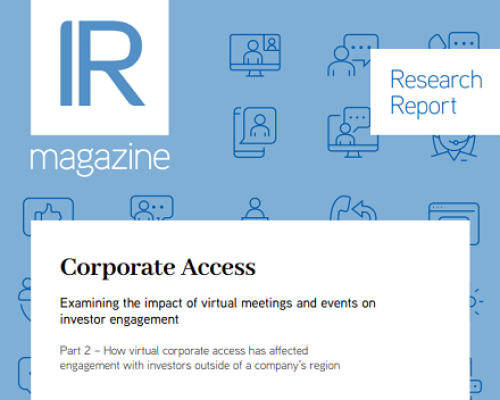Since its implementation in January 2018, Mifid II has slowly sown its influence across the global capital markets. At first, IR professionals reported no change to their day-to-day jobs. Little by little, however, the new regime started to influence IR activity. Reports emerged of difficulty filling roadshow schedules, patchy attendance at investor conferences and more direct contact with the buy side.
In May this year, IR Magazine surveyed 79 IR professionals to examine their feelings about the European legislation and how it has affected their IR programs so far. The headline finding is that IROs are not particularly happy about how the new rules are working out. Exactly half (50 percent) of IROs say they have an overall negative view of the impact of Mifid II, while only 14 percent have a positive impression, according to the results of the survey. ‘It just makes my life more difficult because investors are harder to reach,’ sums up one respondent.
Mifid II affects a wide range of financial products and services, but the most important changes for IR teams are the new rules for research and corporate access payments. Investors can no longer pay for these out of trading commissions, which used to be a handy way to pass the costs on to clients. Most investors now stump up the money from their own pockets and, as a result, closely scrutinize what they spend. In the past an investment company might send 20 individuals to a conference; today it might only send five.
What’s more, the changes have spread beyond Europe’s borders. Some global asset managers are implementing Mifid II’s approach to payments across their entire operations, leading companies in a variety of markets to notice its effects.
The research report from IR Magazine looks at Mifid II from a number of angles, assessing the impact on equity research, corporate access and IR workload, among other areas. Conducted 16 months after Mifid II’s implementation date, it offers the chance to see how the regulation is bedding down in Europe and beyond.
One of the main areas affected by Mifid II is targeting, finds the research. More than half of IROs (53 percent) around the world say they have upped their direct targeting of investors since the introduction of the legislation. The trend is more pronounced in Europe, where 69 percent of respondents say they are going direct to investors more often.
Jan Willem Weidema, head of investor relations at Dutch insurance firm Aegon, is a case in point. Over the last year he has tried a variety of new ways to reach out to investors directly. ‘One of the things we’ve done recently is organize a London roadshow ourselves, and we’ve also used a specialized boutique firm to organize roadshows for us,’ he explains.
For Weidema, there have been some positive results from the new approach. ‘Organizing things yourself does take a bit more effort, but we get a lot more out of it,’ he points out. ‘We saw more long-onlys than we normally see when a broker organizes the roadshow. Next to that, we’ve had several calls and meetings with people who couldn’t make the day of the roadshow but wanted access to management. It leads to a lot more contact with the buy side.’
As for conferences, Aegon is teaming up with others in the insurance sector to help maintain the quality of far-flung events, such as those in the US or Asia, for example. ‘We try to make sure all the insurance companies go [to the same event], so it’s worthwhile for the buy side to come along as well,’ Weidema explains.
The full Mifid II report is available to IR Advanced and IR Intel subscribers to IR Magazine and can be found at IRmagazine.com/reports-library.
This article was published in the Winter 2019 issue of IR Magazine.










